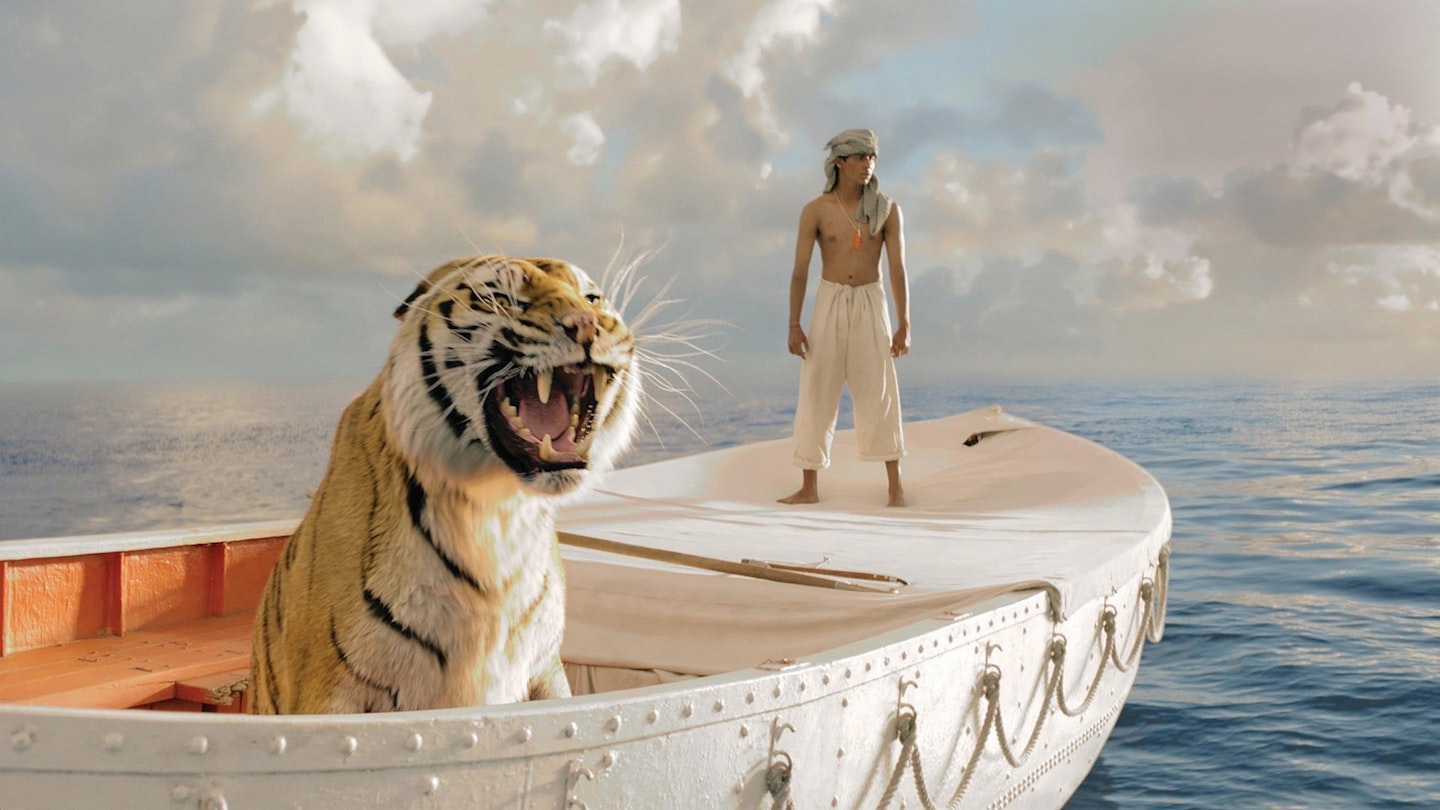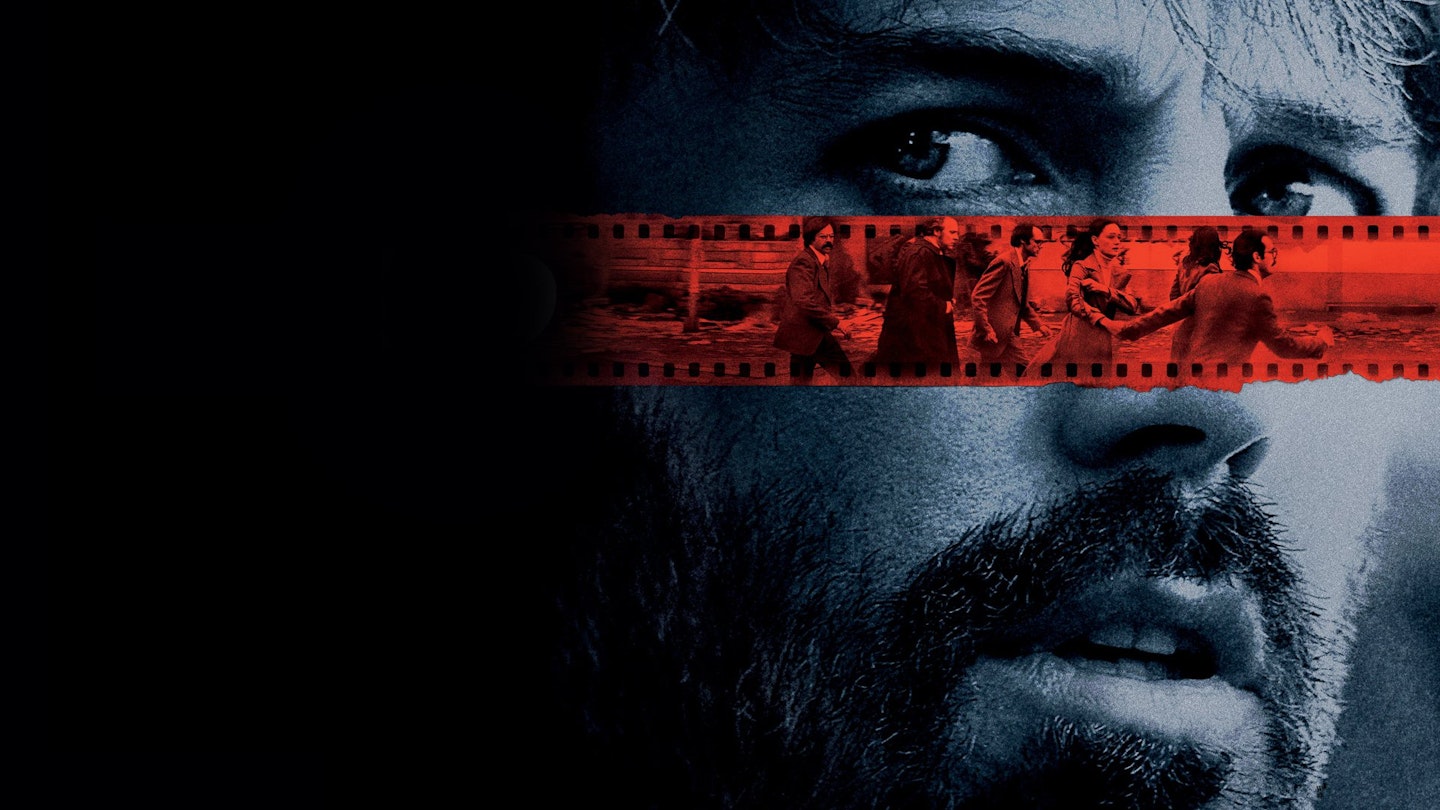We should probably stop deeming any book ‘unfilmable’. All the big ones that seemed impossible are toppling: The English Patient, Naked Lunch, Cloud Atlas, Watchmen, The Lord Of The Rings. From now on, let’s just trust that a sufficiently and necessarily peculiar mind can draw a visual story out of any novel. There are several things about Yann Martel’s Life Of Pi that suggest it couldn’t be realised on screen: it’s largely set on a small boat adrift in the ocean, inhabited only by a young man and a tiger...well, really, do you need further reasons? It requires a tiger that will follow direction and a way of making bobbing about in water interesting for close to two hours, with only one person speaking. Actually, what it needs is Ang Lee, who makes this enormously complicated film look like the simplest thing in the world.
As with almost anything that looks simple, it’s taken a lot of work to get here. It’s been almost a decade since Fox first acquired the rights to adapt Martel’s book, back in 2003, and since then M. Night Shyamalan, Alfonso Cuarón and Jean-Pierre Jeunet have all dipped their feet in its treacherous waters before deciding it wasn’t for them. Even Lee has been working on the film since 2009, with writer David Magee, whose script untangles Martel’s story with enormous elegance and gentle humour. That time has clearly been used well to create something that as a spectacle seems unlike anything previously seen in cinema (technically, it could not have been made ten years ago) and as a piece of storytelling unfolds just about perfectly.
The story starts in Pondicherry, India, where Piscine Patel, named after a French swimming pool and compelled to change his name to a mathematical constant in order to staunch persistent bullying (it’s not nearly so twee as it sounds), lives in a zoo with his family. As the zoo business dries up, the Patel family decide to move to Canada, flog their animals and start a new life. But a storm sinks the ship carrying them to their new home and leaves Pi adrift in a lifeboat with first a few, then even fewer animals, his chief companion being the zoo’s tiger, Richard Parker, an animal who’d prefer a large meal to a shipmate. This story is told by a middle-aged Pi to a writer (Rafe Spall), in a present-day setting that bookends the film.
Lee is always in complete control of the story. This feels like the work of a director not only at his most confident and creative but also enjoying himself more than he ever has before. Typically, even when his stories are those of passion there is something a little chilly in the grace of Lee’s films. Think of The Ice Storm, Brokeback Mountain or even Crouching Tiger Hidden Dragon and they’re largely characterised by aching restraint with occasional bursts of emotion. Life Of Pi bursts early on and keeps expanding.
With the flat ocean providing what is essentially a blank canvas, Lee, along with cinematographer Claudio Miranda and an effects team who cannot be praised enough, runs wild with imagery, such as a whale looming up through waters full of glowing jellyfish, Pi silhouetted against the drowned ship or the motionless water creating a perfect mirror image of the sky above. You could rip almost any shot off the screen and hang it in a gallery. And Lee uses 3D — a tool many directors wield like a sledgehammer — in much the same way James Cameron did with Avatar or Martin Scorsese with Hugo. Lee, like those directors, considers each shot on three planes, rather than just framing a standard scene then thrusting something at the audience to justify the additional cost. But all this beauty is not merely for beauty’s sake. This is most definitely a film about something. In a sense, it’s a film about everything.
Belief is at the story’s centre, which sounds dreadfully homeworky and preachy but it truly isn’t. It’s throwing out questions, not pretending to have the answers. Though religion is a repeated touchstone, this doesn’t seem to be a film about believing in any particular god — in a smartly written dinner scene Pi explains exactly why he chooses to believe in all gods, from all religions — it’s about believing in something, be it God or science. There’s a sort of magic in both, so it just depends whether you like your magic tricks explained or prefer to believe in the ethereal. Imagine the work of Terrence Malick, but with added laughs.
There’s a degree of that confusing magic in Lee’s direction, too. There are a number of scenes in which it is all but impossible to fathom how they were achieved. One of these is the sinking of the ship carrying Pi and his family, which stands proud alongside anything you might have seen in any summer blockbuster. As it goes from the flooded bowels of the ship to Pi leaping into a lifeboat, which swiftly plummets into the squalling waves thanks to a fractious zebra, then crashing about above and below the water, it’s impossible to see the joins. Initially you’re trying to work out how it was done, but then you’re just thrilled that it was. There are numerous similar moments.
A great deal is asked of Suraj Sharma in his first role. Three actors play Pi at different ages and each is worthy of high praise, but Sharma, as the teenage Pi, is unforgettable. For about three quarters of the film he is playing to nothing. At least, it must be assumed that he is; the effects work on the tiger is so utterly convincing that although there is surely a real tiger used in some scenes it would take a very well trained eye, or the tiger’s own mother, to pick it out. So this is really a one-man show for Sharma and he blasts it. Whether screaming in fury or saying nothing at all, he never hits a false note. It’s a blazing debut.
Life Of Pi exists on the bleeding edge of technology and every penny of its budget is on screen, yet it isn’t a film from which you’re likely to take memories of a single money shot or sequence. There’s too much going on to separate isolated moments; it’s all impressive pieces in a unified puzzle. This is a director laying out both the world around us, and the possibilities of cinema to present it, and asking: isn’t this amazing?








